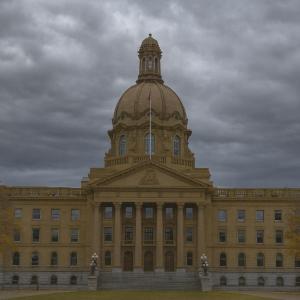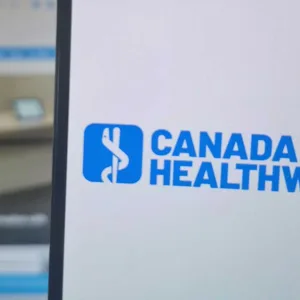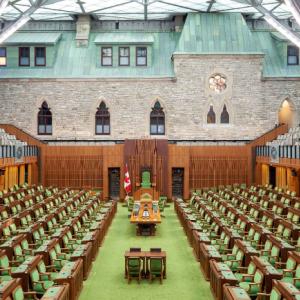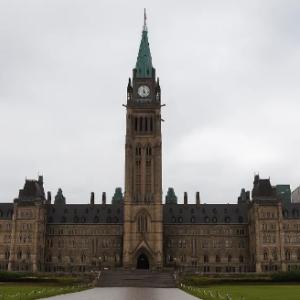What happened to Primary Care and where do we go from here?
As millions of Ontarians find themselves without access to a primary care doctor, provincial Ministry of Health bureaucrats are reported to have dismissed concerns about the supply of physicians. They have reportedly stated that “Ontario has enjoyed a growth in physicians that far outstrips population growth”. This might be factual but creating and sustaining a sufficient medical workforce is not that simple. Much more meaningful measurement is required.
It is passed time that the Ontario Ministry of Health and our politicians at Queen’s Park take action on the critical issue of shortage of family physicians.
Some politicians will say they are not worried since they believe foreign-trained international medical graduates can fill the gap but there is global competition for medical skills. The United States could absorb every doctor that Ontario produces (actually, every doctor Canada produces).
The perspective that there is no concern of a diminished supply of physicians is short-sighted and fails to address the full measure of demographic and scientific realities which are at hand as well as failing to address potential solutions. Consider:
- The aging population, particularly the increasing number of Ontarians over the age of 80 which is expected to double by 2050, requires more visits for primary care and more medical services and advanced care
- Productivity levels are an obstacle to access now and into the future especially as the Old Age Dependency Ratio shifts and labour shortages amplify even with high levels of immigration
- Aging work force challenges the physician supply making retention a major challenge that could be offset with more flexible options for physicians of retirement age
- Impact of COVID-19 on both physician morale and physical health including Long Covid
- Role of AI in reducing administrative time for physicians
- Role of AI in administrative roles for nurses
- Point of Care Testing and AI directly integrated for Patient Self Care
- Robotics in rehabilitation and elder care
Government needs to understand and plan for the bigger picture, but does not have a history of doing so. Over past decades, political and policy decisions on primary care reform were made to manage health care budgets, not to prepare for future need.
Policy makers and politicians have grossly miscalculated the consequences of their decisions to date with respect to family medicine. For example, while increased funding encouraged significant numbers of family physicians to enter team-based care over the past fifteen years, costs rose without translating into greater uptake of patients. The Liberal government of the day then restricted access of family physicians into the much-lauded family health team models. This left new family medicine graduates to look for areas of practice where they could find equivalent remuneration or improved lifestyle. Recent history in Ontario illustrates that team-based care to date has not improved access to care.
Provincial budget-related decisions also had an impact on the way family physicians have been trained over the past twenty years. There was a change in training to encourage family physicians to spend more time with patients to avoid what was deemed the revolving door of medicine but which resulted in lack of access for patients overall as physicians saw fewer patients per day.
The Ministry of Health bureaucrats shouldn’t wonder why the number of physicians is increasing yet physician services are decreasing. They should know why: family physicians were trained and incented to see fewer patients in team-based care. Productivity was not encouraged financially and access for patients declined.
At the same time, electronic medical records were brought on stream and the family physician’s administrative load increased exponentially. There was increasing e-forms and documentation being easily requested as an unintended indirect consequence of more entities wanting more data collection. In addition, there were the demands of an aging population requiring more referrals and consultations, which was compounded by the difficulty finding access to specialists.
Again, recent history in Ontario (and across Canada for that matter) illustrates that the bureaucratic mindset of how family physicians should operate has produced negative results for access to primary care.
Today, family medicine graduates want more access to teams. This is not surprising because medical students have been trained in teams… it’s what they know. Even though family physicians have worked in teams for decades they were not as formalized as they are now. But the productivity of the provider must matter and the need for each health provider to maximize access to more patients must be encouraged financially. The history of family medicine is that it follows the money. As I have written before, it is about the money – always has been, always will be. The result of efforts to control costs in a single payer system with no options outside of government funded primary care services has been the rationing of primary care including teams.
In Ontario and across Canada there are now two tiers of patients, those with a family physician and those without. However, physicians won’t be corralled into teams by government decree. They must be able to have their professional needs met or they will look elsewhere—as many have done already. Both working conditions and remuneration are draw backs to attracting and retaining physicians in family practice in Ontario.
As the retirement-age physician cohort grows it is likely that we will see a loss of many thousands of family physicians in the coming years diminishing the positive impact of recent recruitment efforts. A 2022 RBC report, Proof Point: Canada needs more doctors-and fast, estimates Canada will be short about 44,000 physicians by 2028, with family doctors accounting for most of that deficit. Due to Ontario’s large population, it can expect to be hit hard. According to the report, the number of doctors per capita in Canada is already behind peer countries like France and Germany.
Given this availability of information surrounding health human resource trends, it is ridiculous that the Ontario government has attempted to block the release of information pertaining to the anticipated shortages of physicians, nurses, and personal support workers. Why spend millions of taxpayer dollars trying to prevent the release of the numbers when its plain to see there is a shortage in almost every health care space in Ontario? And given the Old Age Dependency Ratio, the labour shortages relative to demand will get much worse.
The magnitude of the problem is extensive. Team-based care has not resulted in solving access problems to primary care or improved cost-effectiveness. Nonetheless, it is appreciated by physicians and their patients alike. So where do we go from here?
Recently the concept of a “Patient Right” to access a primary care team been floated out. But what benefit is this concept when the reality is that politicians and policy makers lack the forward planning to attach the necessary funding to fulfill such an expectation? In reality, primary care reform and its necessary funding has been in drips and drabs through the last 20-30 years. Perhaps this is a reasonable approach if the unintended consequences within a single payer system were not so easily predicted. Ultimately primary care in Ontario needs to be adequately funded or freed to permit more innovation outside the restrictions of government funding alone.
Health Minister Sylvia Jones has attempted to throw cold water on the crisis. The Minister said “the interest to practice and work in the province is high” and that “physicians are a really important part of our health-care system” -- and yet actions, or lack thereof, speak louder than words.
The reality is that while Minister Jones announces a spectrum of efforts from building new medical schools, adding funding for more medical residents, and addressing issues surrounding sick notes, the primary care crisis will not be improved in any significant way by these measures. The magnitude of the problem should be recognized for what it is now and anticipated for what it will be over the next twenty years.
The recent lip service that has been paid to the issues surrounding primary care is careless. There is a complacency at the Ministry of Health that is reckless. Politicians and bureaucrats would best serve the public to seek out the input of physicians and undertake comprehensive planning for the primary care workforce, required now and into the future.
This article was originally published on Dr. Merrilee Fullerton's substack.
References
There is no concern about a diminished supply of doctors in Ontario, Canadian Press, Allison Jones, May 8, 2024
https://globalnews.ca/news/10481990/ontario-doctors-supply-ministry-health/
Ontario Helping Family Doctors Put Patients Before Paperwork, Ontario Newsroom, April 24, 2024
Family doctor program at Queen’s finishes 1st year—fewer medical students going into family medicine, CBC, May 5, 2024
https://www.cbc.ca/news/canada/ottawa/queen-s-family-medicine-program-1.7192163
In Conversation with Jane Philpott, McGill University, May 9, 2024
https://healthenews.mcgill.ca/in-conversation-with-jane-philpott/
Proof Point: Canada needs more doctors—and fast, RBC Thought Leadership, November 23, 2022
https://thoughtleadership.rbc.com/proof-point-canada-needs-more-doctors-and-fast
Photo credit: Shortage by Nick Youngson CC BY-SA 3.0 Alpha Stock Images
Dr. Merrilee Fullerton’s “A Physician in the Political Arena” can be read here.
View related short videos:









